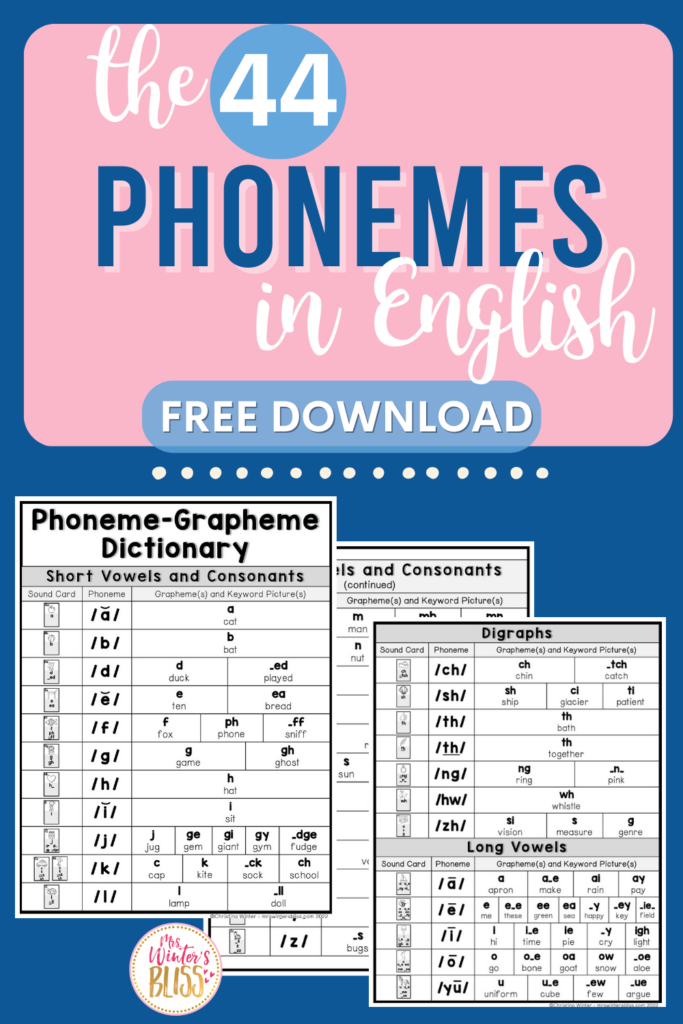

In this post, I share information about phonemes and offer resources to help you systematically and explicitly teach your Kindergarten, first, and second-grade students the 44 phonemes in English. Be sure to grab the FREE Phoneme-Grapheme dictionary that lists the 44 phonemes and matches them with the correct graphemes.
It is widely known that the English alphabet has 26 letters. A lesser-known fact is that those 26 letters make (at least!) 44 different sounds, known as phonemes. As teachers, our phonics instruction revolves around teaching our students the relationship between these sounds (phonemes) and the letter and letter combinations (graphemes) that are used to represent them.
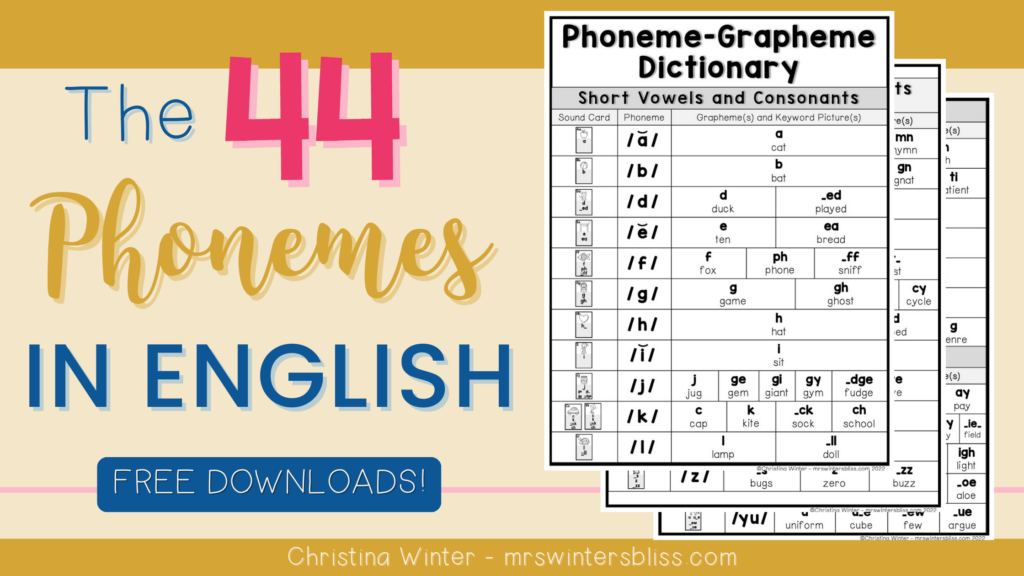
I often hear from teachers who have questions about the 44 phonemes. They commonly ask, “What are the 44 phonemes in English?” or “How do I teach the 44 phonemes?” Today I am happy to provide you with information to help answer those questions. I’ll share information about phonemes and offer you videos and resources to help you teach the 44 phonemes to your students.
What is a Phoneme?
A phoneme is the smallest unit of sound that can convey a unique meaning. For example, /c/ /a/ /t/ are the 3 phonemes we hear in the word ‘cat’. When we change just one of those phonemes (/c/ to /r/) ‘cat’ becomes ‘rat’ and the meaning has changed.
Each language has its own set of phonemes. Generally, it is agreed upon that English has 44 sounds. You may come across lists with more or less due to accents, dialects, and the evolution of the language itself.
The 44 phonemes in English can be divided into two major categories: consonants and vowels. When a consonant sound is produced, the airflow is cut off, either partially or entirely. A vowel sound is one in which the airflow is unobstructed when the sound is made.
A List of the 44 Phonemes
This FREE Phoneme Grapheme Dictionary lists all of the 44 phonemes for you in a clear and organized manner. It matches all the phonemes with the correct graphemes and offers a keyword as an example. It serves as an excellent reference tool for your instruction.

.
Sign up below to get your own free copy of this FREE Phoneme-Grapheme Dictionary and other resources in my Free Science of Reading Toolkit!
*87% of the time, school spam filters block emails like mine 😩 Please use a personal address so you don’t miss a thing!
How to Pronounce the 44 Phonemes
Oftentimes, when modeling the phonemes for our students we unintentionally add the uh or schwa sound to the end of consonants. If students hear this and imitate it, it can lead to problems with later reading and writing tasks. For this reason, it is important to produce only the phoneme itself without adding the schwa sound.
This video does an excellent job of modeling the proper pronunciation of each phoneme.
A Phonics Scope and Sequence
Many teachers are overwhelmed by the number 44. They are unsure of where to start and the order in which to teach the phonemes. My advice is to follow a phonics scope and sequence and introduce just 1 sound at a time. When you follow a research-based scope and sequence you will systematically and explicitly teach students to connect the phonemes and graphemes.
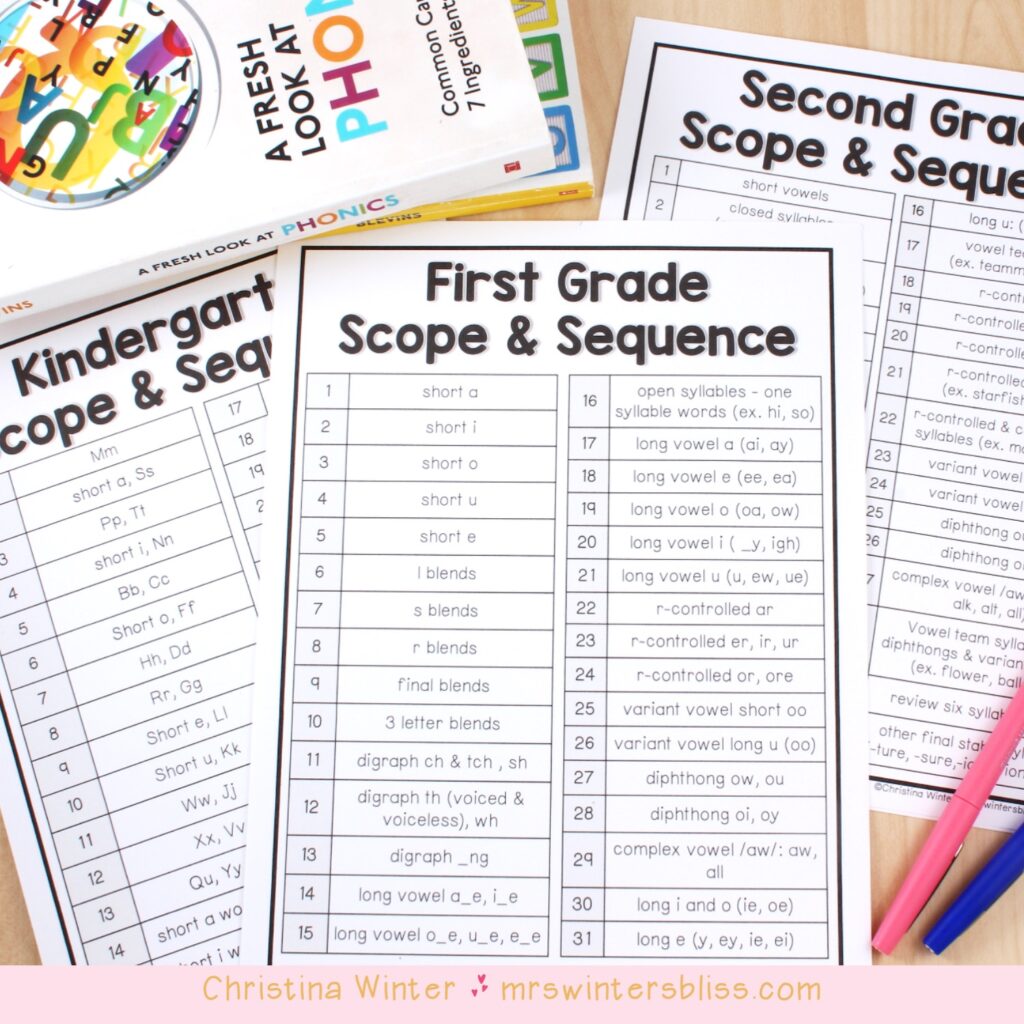
.
If your school does not provide you with a systematic phonics scope and sequence, you can download one in this post A Science of Reading-Aligned Phonics Scope and Sequence for K-2.
More Ways to Teach the 44 Phonemes
If you are looking for more ways to teach your students the 44 phonemes in a systematic way, consider using a Phoneme Sound Wall in your classroom.
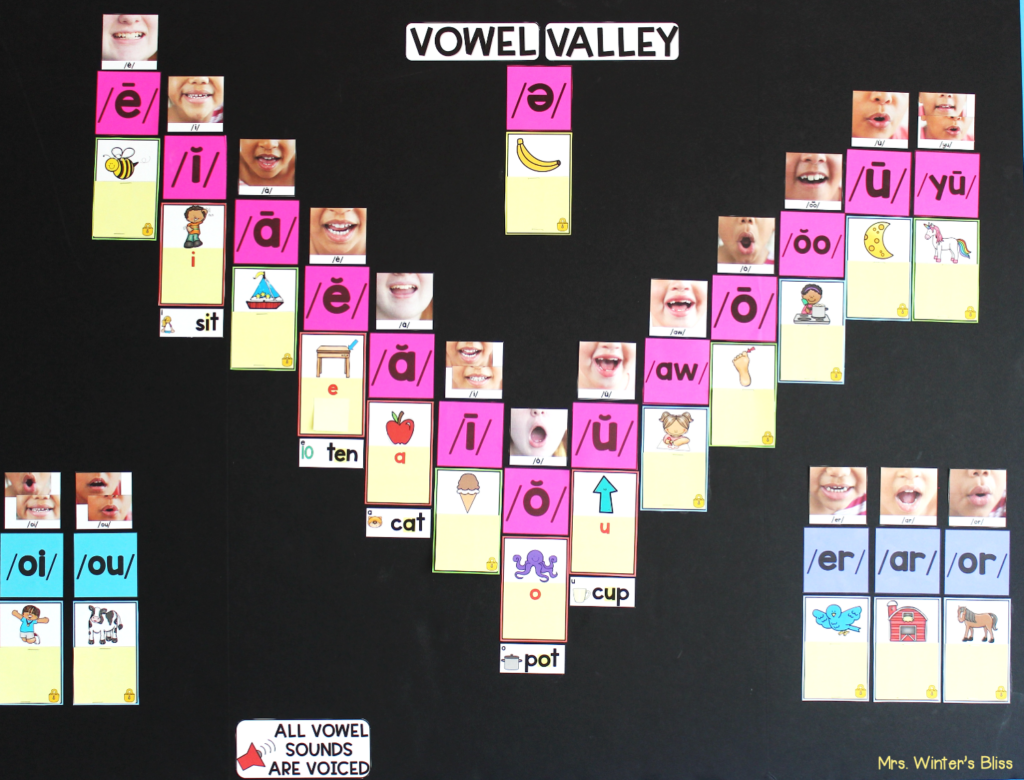
.
A sound wall is a way to organize and display the different sounds we hear in speech. It matches the phonemes to the graphemes that represent those sounds. Similar to a word wall, a sound wall is a place for students to reference when they are spelling and reading words. But UNLIKE a traditional A-Z word wall (where words are grouped by their beginning letter), words on a sound wall are grouped by their sounds.
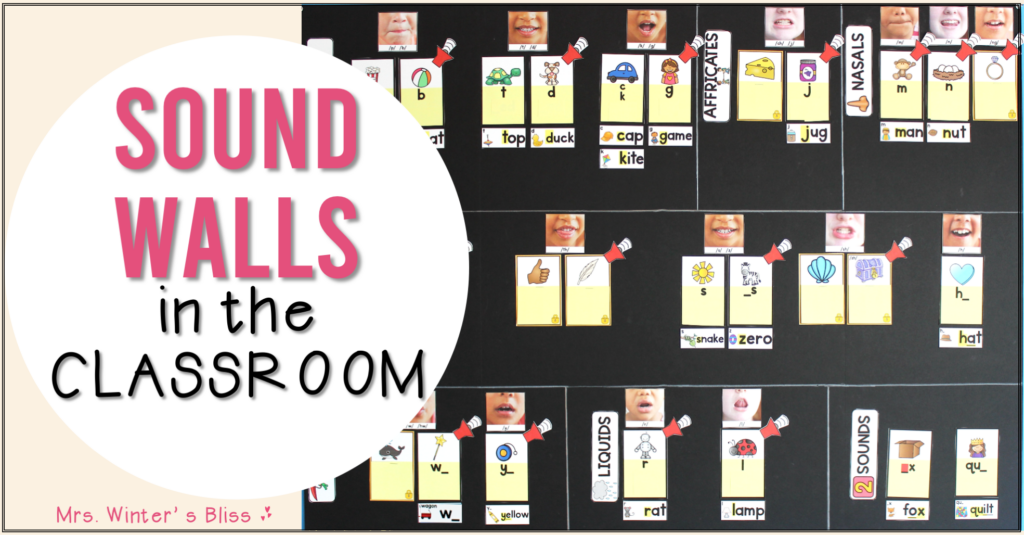
.
Interested in learning more about sound walls? Read more in this post Information and Tips for Using a Sound Wall.
The benefits of knowing the 44 sounds of the English language are significant. When we help our students master these skills we prepare them to become readers who can decode with ease, allowing them to focus on comprehension and gathering meaning from a text – the ultimate goal of reading!









